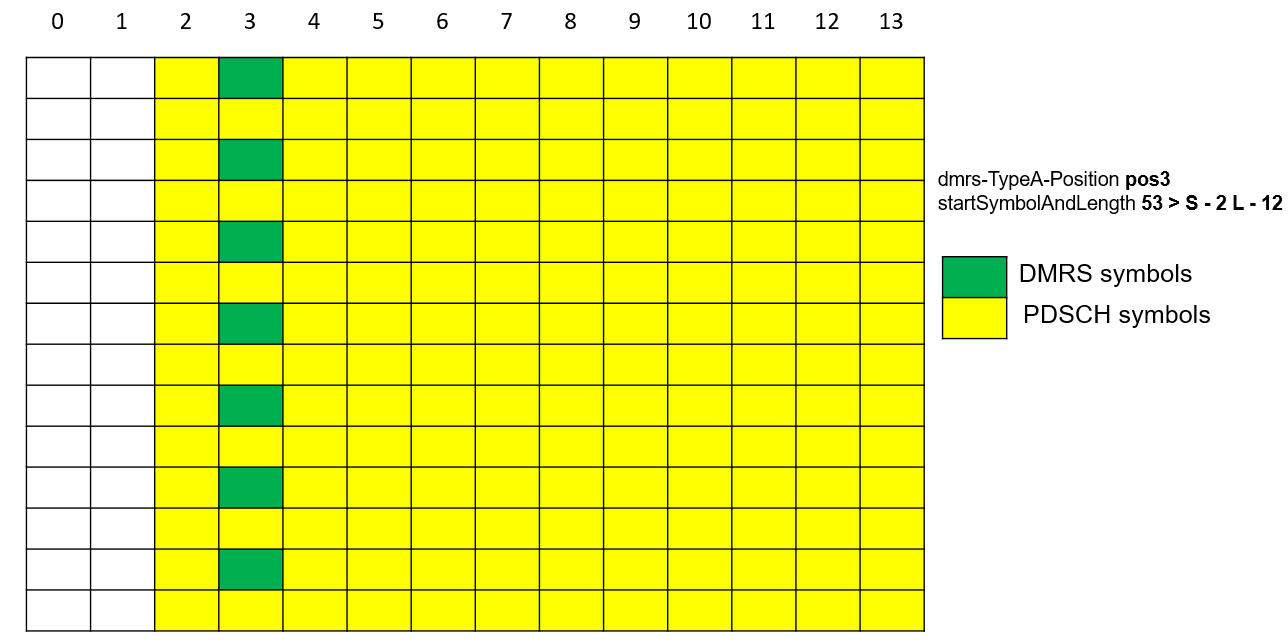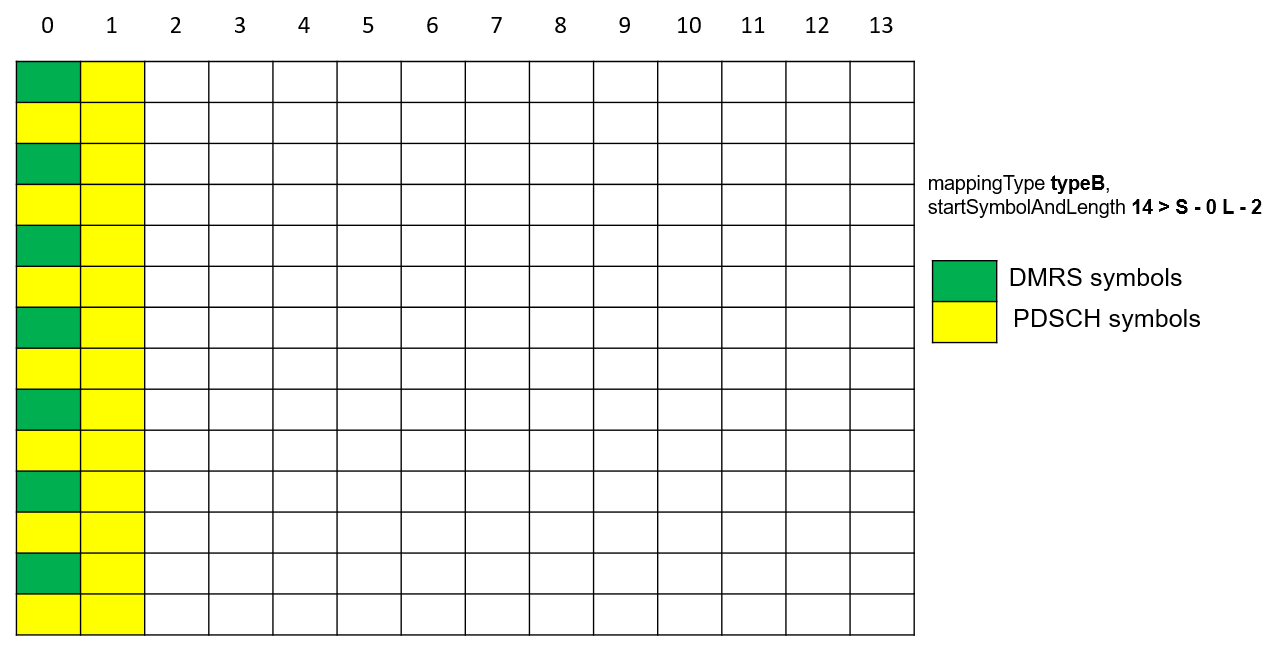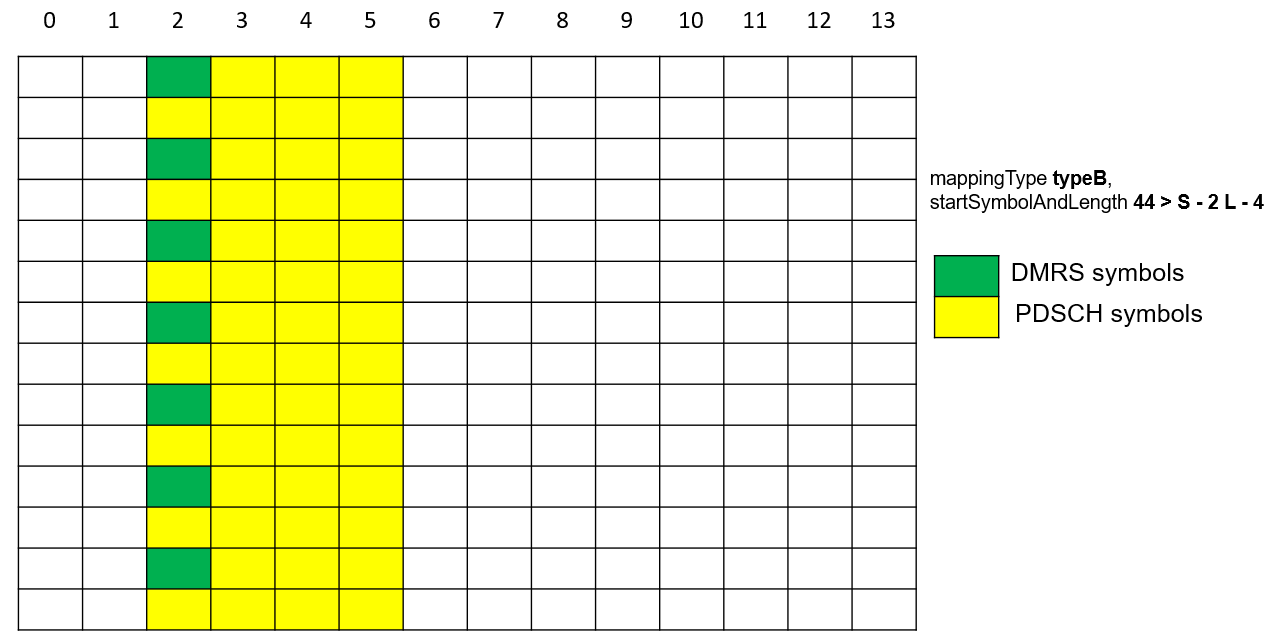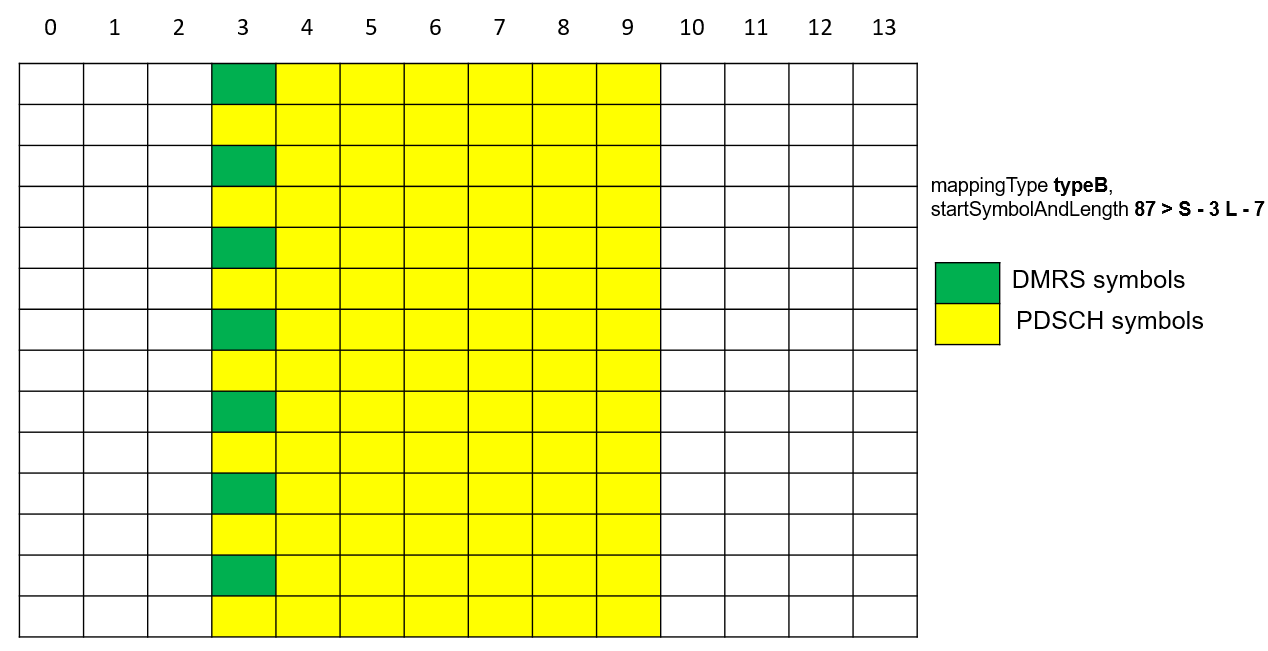PDSCH mapping – type A and type B
Introduction
PDSCH is Physical Downlink Shared Channel used for User data transfer in 5G. PDSCH is transmitted with DMRS signals. In 5G NR, PDSCH scheduling is defined based on mapping type, it can be either slot-wise or non-slot-wise scheduling. The non-slot based scheduling also known as mini-slot based scheduling in 5G.
Key Pointers
- PDSCH mapping type A is slot based scheduling
- PDSCH mapping type B is mini-slot based scheduling
- PDSCH allocation starts from symbol 0, 1, 2 or 3 in mapping type A
- PDSCH allocation starts from symbol 0 to 12 in mapping type B
- DCI time domain resource assignment field helps UE to understand the PDSCH mapping type
- Type A DMRS start at symbol 2 or 3 in slot while with type B it will be first symbol where PDSCH allocation starts
- Type A minimum allocation can be 3 symbols where with type B minimum allocation can be 2 symbols
- Type A first symbol configuration is done by RRC signaling, while type B first symbol is explicit and does not require any signaling
- Mapping Type A can be or can not be front loaded with DMRS, but mapping type B is always front loaded with DMRS
- mapping type B is suitable for low latency use cases
- mapping types uses following table from 3GPP TS 38.214 for Valid S and L combinations, S-starting symbol and L – allocation length in symbols

PDSCH mapping type
Mapping type for PDSCH is used to define the DMRS configuration of PDSCH transmissions. Based on first DMRS symbol location, there are following two mapping types;
- PDSCH Mapping type A
- PDSCH Mapping type B
The DCI time domain resource assignment field points to a row number within the look-up table and each row defines which type to be used either type A or type B.
PDSCH mapping type A
- With mapping type A, DMRS signal is mapped relative to the start of the slot irrespective of which symbol in the slot the PDSCH transmission starts
- PDSCH Starting Symbol can be 0~3
- PDSCH Length can be 3~14 in case of normal CP and 3~12 in case of extended CP
- First DMRS symbol position for mapping type A is configured by RRC via either MIB or via ServingCellConfigCommon within SIB1 or dedicated signaling
- dmrs-TypeA-Position field is used for this purpose and it can have two values pos2 or pos3
- First symbol of DMRS is located at either symbol 2 (pos2) or at symbol 3 (pos3) within the slot
- The symbol numbering is relative to the start of slot rather the start of PDSCH transmission
- DMRS symbol can start only at symbol 2 or 3 regardless of PDSCH start and length
- dmrs-TypeA-Position can not be set to 2 if PDSCH allocation start in symbol 3
PDSCH mapping type B
- With mapping type B, DMRS signal is mapped relative to the start of the PDSCH allocation rather than start of the slot boundary i.e. first OFDM symbol where PDSCH reception starts
- As it uses first symbol for DMRS so it is also called Front Loaded
- Benefit of front loading the DMRS reduces latency, because UE can start channel estimation as soon as the first symbol is received
- As DMRS start symbol is fixed in type B, the gNB need not explicitly provide configuration
- Mapping type B is used for mini-slot based scheduling
- In this type, PDSCH Starting Symbol can be 0~12 in case of Normal CP and 0~10 in case of extended CP
- PDSCH Length can only be 2 or 4 or 7 in case of Normal CP and 2 or 4 or 6 in case of extended CP
PDSCH mapping type A and type B Examples
Case#1: pdsch mapping Type A
Lets take following MIB and SIB#1 log snippet to find out the DMRS and PDSCH region for type A.

From MIB content we can get dmrs-TypeA-Position pos3 indicate the DMRS first symbol is the 3rd symbol in the slot and within SIB#1 pdsch-configCommon IE startSymbolAndLength value 53 indicate the SLIV. Referring to SLIV lookup table, we can get Start Symbol = 2 and Length = 12. Using this following picture depicts the DMRS and PDSCH mapped within one slot.

Case#2: pdsch mapping Type B
Lets use following log snippet to plot the PDSCH Type B DMRS and PDSCH allocation. With type B, we do not need any IE to know the first symbol because the first symbol of DRMS will be same as the first symbol of PDSCH allocation or we can the the start symbol will be the DMRS symbol. So we need to decode the startSymbolAndLengh IE.

In above snapshot, we have got 14, 44 and 87 as startSymbolAndLength and it can be decoded as follow.
- startSymbolAndLength 14 —> S=0 and L =2
- startSymbolAndLength 44 —> S = 2 and L =4
- startSymbolAndLength 87 —> S = 3 and L = 7
Using above below picture depicts the resource grid for the three allocations.



References
Related Posts
- 5G NR Quasi-Colocation Concept, Types and Application
- 5G NR Reference Signals (DMRS, PTRS, SRS and CSI-RS)
- 5G NR Sounding Reference Signal (NR-SRS)
- 5G NR SSB Positioning – Time and Frequency Resources
- 5G NR Resource Block Definition and RB calculations
